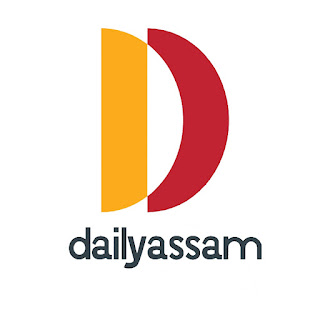ECO-HC-5016: INDIAN ECONOMY-I
Course Description
Using appropriate analytical frameworks, this course reviews major trends in economic
indicators and policy debates in India in the post-Independence period, with particular
emphasis on paradigm shifts and turning points. Given the rapid changes taking place
in India, the reading list will have to be updated annually.
Course Outline
1. Economic Development since Independence
Major features of the economy at independence; growth and development under different
policy regimes—goals, constraints, institutions and policy framework; an assessment of
performance—sustainability and regional contrasts; structural change, savings and
investment.
2. Population and Human Development
Demographic trends and issues; education; health and malnutrition.
3. Growth and Distribution
Trends and policies in poverty; inequality and unemployment.
4. International Comparisons
With China, Pakistan, Banglade3sh, Sri Lanka, Nepal and Vietnam
***************************
ECO-HC-5026: DEVELOPMENT ECONOMICS-I
Course Description
This is the first part of a two-part course on economic development. The course begins
with a discussion of alternative conceptions of development and their justification. It then proceeds to aggregate models of growth and cross-national comparisons of the growth experience that can help evaluate these models. The axiomatic basis for inequality measurement is used to develop measures of inequality and connections between growth and inequality are explored. The course ends by linking political institutions to growth and inequality by discussing the role of the state in economic development and the informational and incentive problems that affect stategovernance.
Course Outline
1. Conceptions of Development
Alternative measures of development, documenting the international variation in these measures, comparing development trajectories across nations and within them.
2. Growth Models and Empirics
The Harrod-Domar model, the Solow model and its variants, endogenous growth models and evidence on the determinants of growth.
3. Poverty and Inequality: Definitions, Measures and Mechanisms
Inequality axioms; a comparison of commonly used inequality measures; connections between inequality and development; poverty measurement; characteristics of the poor; mechanisms that generate poverty traps and path dependence of growth processes.
4. Political Institutions and the Functioning of the State
The determinants of democracy; alternative institutional trajectories and their relationship with economic performance; within-country differences in the functioning of state institutions; state ownership and regulation; government failures and corruption.
**************************
ECO-HE-5016: ECONOMICS OF HEALTH AND EDUCATION
Course Description
The importance of education and health in improving well-being is reflected in their inclusion among the Millennium Development Goals adopted by the United Nations member states, which include among other goals, achieving universal primary education, reducing child mortality, improving maternal health and combating diseases. This course provides a microeconomic framework to analyze, among other things, individual choice in the demand for health and education, government intervention and aspects of inequity and discrimination in both sectors. It also gives an overview of health and education in India.
Course Outline
1. Role of Health and Education in Human Development
Importance in poverty alleviation; health and education outcomes and their relationship with macroeconomic performance.
2. Microeconomic Foundations of Health Economics
Demand for health; uncertainty and health insurance market; alternative insurance mechanisms; market failure and rationale for public intervention; equity and inequality.
3. Evaluation of Health Programs
Costing, cost effectiveness and cost-benefit analysis; burden of disease.
4. Health Sector in India: An Overview
Health outcomes; health systems; health financing.
5. Education: Investment in Human Capital
Rate of return to education: private and social; quality of education; signaling or human capital; theories of discrimination; gender and caste discrimination in India.
6. Education Sector in India: An Overview
Literacy rates, school participation, school quality measures.
******************************
ECO-HE-5026: MONEY AND FINANCIAL MARKETS
Course Description
This course exposes students to the theory and functioning of the monetary and financial sectors of the economy. It highlights the organization, structure and role of financial markets and institutions. It also discusses interest rates, monetary management and instruments of monetary control. Financial and banking sector reforms and monetary policy with special reference to India are also covered.
Course Outline
1. Money
Concept, functions of money; concept of money supply and its measurement; money multiplier theory, RBI’s approach to money supply.
2. Financial Institutions, Markets, Instruments and Financial Innovations
Meaning and types of financial institutions, nature and role of financial institutions;
financial markets: definitions and types-money market and capital market, their characteristics and functions, call money market, treasury bill market, commercial bill market including commercial paper and certificates of deposits, government securities market, primary and secondary market for securities, financial sector reforms in India, financial derivatives –meaning, types ,distinctive features of financial derivatives and its benefits.
3. Interest Rates
Determination; sources of interest rate differentials; theories of term structure ofinterest rates; interest rates in India.
4. Banking System
Meaning and types; Functions of Commercial banks, process of credit creation and its limitations,Balance sheet of Commercial banks, portfolio management-meaning and objective of portfolio management, theories of portfolio management; banking sector reforms in India.
5. Central Banking and Monetary Policy
Functions of central bank; monetary policy-objectives, indicators and instruments of monetary control; monetary management in an open economy; current monetary policy of India.
********************************
ECO-HE-5036: PUBLIC FINANCE
Course Description
This course is a non-technical overview of government finances with special reference to India.The course does not require any prior knowledge of economics. It will look into the efficiency and equity aspects of taxation of the centre, states and the local governments and the issues offiscal federalism and decentralisation in India. The course will be useful for students aimingtowards careers in the government sector, policy analysis, business and journalism.
Course Outline
Part 1: Theory
1. Normative Theory of Public Finance –Nature and Scope: Allocation Function, Distribution Function and Stabilization Function. Coordinating the functions.
2. Public Goods and their characteristics. Free Rider Problem and Market Failure, Externalities visà-vis Public Good.
3. Direct and Indirect Tax. Concepts of taxation: tax rate, buoyancy & elasticity of a tax.
Proportional, Progressive and Regressive Taxation. Benefit Principle and Ability to Pay Theory.
Part 2: Issues from Indian Public Finance
4. Fiscal Policies: Definition and Objectives. Instruments of Fiscal Policy.Adopting Monetary Policy to complement Fiscal Policy: The Indian Experience.
5. Indian Tax System. Direct Taxes: Income Tax, Corporate Tax, Customs Duty etc. Reforms in the Indirect Tax Structure: Goods and Service Tax.
6. Structure of the Public Budget. Types of Deficits and their significance: Revenue Deficit, Fiscal Deficit and Primary Deficit
7. Fiscal Federalism in India: Principles of Fiscal Devolution, Horizontal and Vertical Fiscal Balance. Federal Finance and the Finance Commission.
8. State and Local Finances. The State Subjects and its Budget. Fiscal decentralization: Role of Municipalities and Gaon Panchayats.
********************************
Post ID: DABP001690






